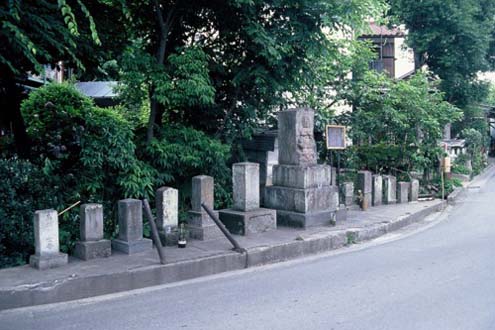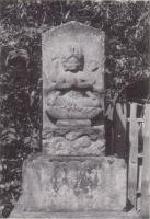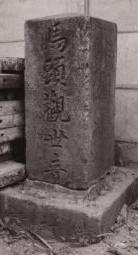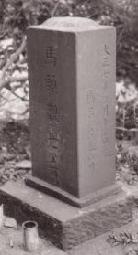Last updated: June 27, 2017

Bato Kanzeon Pagoda along the old road

Bato Kanzeon Pagoda (city-designated cultural property)
The belief in Bato Kanzeon is thought to have started around the Nara period, but it was not very popular and became popular from the latter half of the Edo period. This is thought to be due to the spread of horses in rural areas, and the role that horses played became larger, and stone pagodas began to be erected in various places to commemorate their faith. Horses were often used for agricultural work and transporting goods, and as a result, it is thought that the number of memorial services for beloved horses that had died due to illness or accidents increased. In addition, beliefs such as prayers for safe travels, good harvests, and peace have also come to be practiced.
Looking at the Bato Kanzeon Pagodas in the city, there are 45 stone pagodas that remain from the late Edo period to the 1950s. Among these, I would like to introduce you to the Bato Kanzeon Pagoda from the Edo period, which has the oldest history.
The most representative one is the one located on Nakajima in Yanoguchi, where 14 Bato Kanzeon pagodas are lined up along the old road. The stone pagoda in the center was built in 1816 and is the oldest Bato Kanzeon pagoda in the city. It is also the largest stone pagoda (184 cm in height), and is notable for its authentic relief carving of a horse-headed Kanzeon. The names of 19 nearby villages, including the petitioner Ganshuyanokuchi Village (Yanoguchi Village), are engraved on the base stone of the stone pagoda, and the stone pagoda was built with the cooperation of these villages. I understand this. Since the old road on which the stone pagoda stands leads to the Yanoguchi ferry terminal, it is thought that the villages that used the ferry built it to pray for traffic safety. This stone pagoda has been designated as a cultural property by the city as a reference to the role of horses and the importance of ferry terminals.
Looking at the distribution of Bato Kanzeon pagodas in the city, 18 out of a total of 45 are located in the Yanoguchi area, indicating a concentrated distribution. Of these, 14 are located along the old road near the Yanoguchi ferry terminal, and apart from this, the distribution is almost the same as in other areas. Overall, there are not many of them, and they are scattered throughout the city, mainly along the old roads.
The oldest one was built in 1816, and the newest one was built in 1964, spanning a very long period from the late Edo period to the Meiji, Taisho, and Showa periods. Masu. If you divide the stone pagodas that were built over a period of about 150 years into different eras, you will find that they were at their peak during the Meiji period, with 6 in Edo, 16 in Meiji, 9 in Taisho, and 9 in Showa.
When looking at the shapes of stone pagodas, they are mainly square pillar-shaped and koma-gata (the top of the stone pagoda is shaped like a shogi piece), which can be said to be a general trend. In addition, most of the surfaces of the stone pagodas have only the characters ``Bato Kanzeon'' engraved on them, and the ``Bato Kanzeon'' statue, which has three faces and eight arms (sanmenhappi) in full-scale relief, is one of the Yanoguchi and Nakajima statues. Examples only. There are three examples of horse faces embossed on top of the letters.
Here are some of the Bato Kanzeon pagodas that can be seen in the city.
1 is located near Yatogawa Bridge in Daimaru and was built in 1830, the second oldest bridge in the city. It was built by the Kochu of Daimaru Village.
2 is located on the north side of Hirao's neighborhood park, and the stone pagoda has the horse's name and year of death engraved on the side, indicating that it was built as a memorial service for a beloved horse.
3 is located facing the Oshidate Ferry Road, and you can see the relief of a horse's head.
| region | quantity |
|---|---|
| Yanoguchi | 18 |
| Oshidate | 3 |
| Higashinaganuma | 6 |
| Daimaru | 1 |
| 100 villages | 3 |
| Sakahama | 8 |
| Hirao | 6 |
| total | 45 |

1. Bato Kanzeon Pagoda in Daimaru

2. Bato Kanzeon Pagoda in Hirao

3. Bato Kanzeon Pagoda in Oshidate
Inagi City Education Department Lifelong Learning Division Tel: 042-377-2121